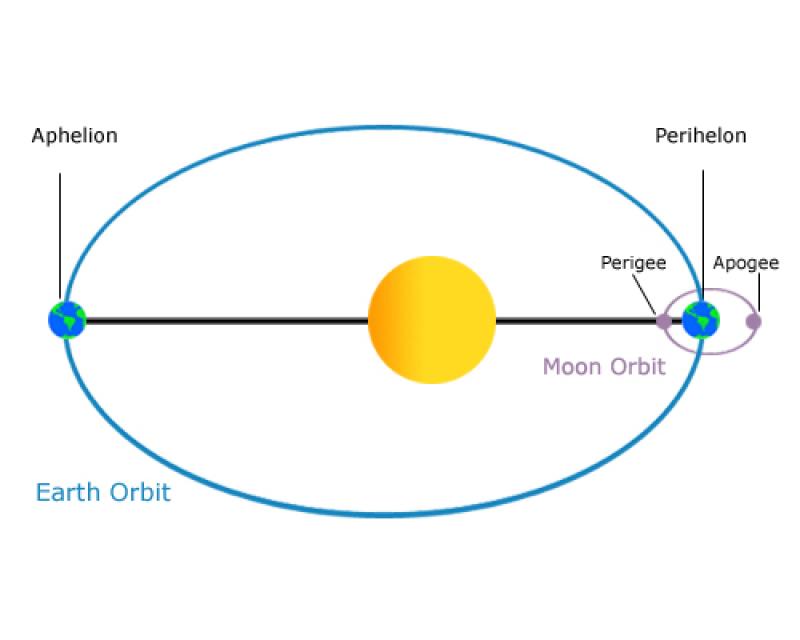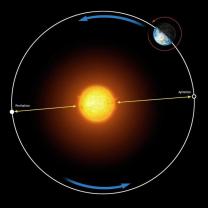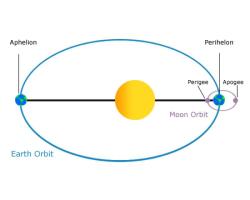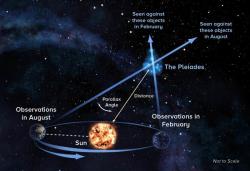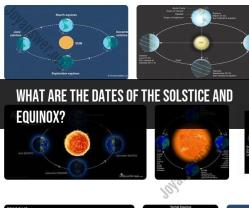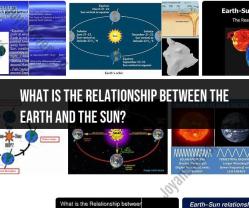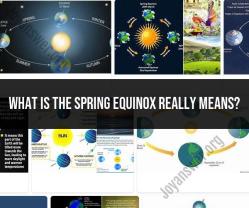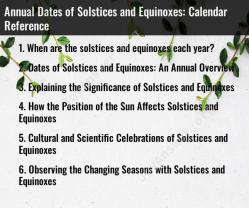How does the Earth maintain its orbit around the Sun?
The Earth maintains its orbit around the Sun due to the gravitational dynamics governed by Newton's law of universal gravitation and the principles of celestial mechanics. The key factors that contribute to the Earth's stable orbit include:
1. Gravitational Attraction:
- The Sun exerts a gravitational force on the Earth, and this force is proportional to the product of their masses and inversely proportional to the square of the distance between them, as described by Newton's law of universal gravitation. The gravitational force provides the centripetal force required to keep the Earth in orbit.
2. Centripetal Force:
- In circular motion, there is a centripetal force directed toward the center of the circular path. In the case of the Earth's orbit around the Sun, the gravitational force acts as the centripetal force. This force prevents the Earth from moving in a straight line and ensures it follows an elliptical orbit around the Sun.
3. Conservation of Angular Momentum:
- The Earth has an angular momentum associated with its orbital motion around the Sun. According to the conservation of angular momentum, the Earth will maintain its angular momentum unless acted upon by an external torque. In the vacuum of space, where there is minimal friction or external torque, the Earth's angular momentum remains nearly constant.
4. Stable Orbital Parameters:
- The Earth's orbit around the Sun is nearly elliptical, with the Sun at one of the foci. The parameters of this ellipse, including the semi-major axis, eccentricity, and orbital inclination, are determined by the initial conditions and gravitational interactions in the early solar system. These parameters contribute to the stability of the Earth's orbit.
5. Kepler's Laws of Planetary Motion:
- Kepler's laws describe the motion of planets around the Sun. The first law (law of elliptical orbits) states that the planets move in elliptical paths with the Sun at one focus. The second law (law of equal areas) describes the equal area swept by a planet's radius vector in equal time intervals. The third law (law of harmonies) relates the orbital period and the semi-major axis of the orbit.
6. Absence of Significant External Torques:
- In the vacuum of space, where there is negligible air resistance and minimal gravitational influence from other celestial bodies, the Earth experiences minimal external torques that could significantly alter its orbit.
Conclusion:
The combination of gravitational attraction, centripetal force, conservation of angular momentum, stable orbital parameters, and adherence to Kepler's laws collectively ensures that the Earth maintains a relatively stable and predictable orbit around the Sun. These fundamental principles of celestial mechanics contribute to the overall stability of planetary orbits within our solar system.
How does gravitational force enable the Earth to sustain its orbit around the Sun?
The Earth's orbit around the Sun is sustained by the force of gravity, specifically the gravitational attraction between the two bodies. This force acts like an invisible tether, pulling the Earth towards the Sun and preventing it from flying off into space.
Here's how the gravitational force works:
- Mass Matters: The Sun's immense mass generates a strong gravitational field around itself. This field weakens with increasing distance but still exerts a significant pull on the Earth.
- The Balance between Gravity and Velocity: Earth's orbital velocity around the Sun creates a centrifugal force (a force pushing outwards) that balances the Sun's gravitational pull. This balance prevents the Earth from falling directly into the Sun.
- Elliptical Path: The Earth's orbit is not a perfect circle but rather an ellipse. This is because the gravitational pull varies slightly depending on the Earth's position in its orbit.
- Constant Motion: The Earth is constantly moving in its orbit, continuously falling towards the Sun but never falling in due to the balancing centrifugal force.
Here's an analogy to think about the Earth's orbit:
- Imagine a ball tied to a string and spinning around you. The string represents the gravitational force pulling the ball towards you, and the ball's spinning motion represents the centrifugal force pushing it outwards. As long as the string holds and the ball continues spinning, it will maintain its orbit around you.
In conclusion, the Earth's orbit around the Sun is a continuous dance between the gravitational pull and the centrifugal force. These two forces work in perfect balance, ensuring the Earth maintains its stable orbit and sustains life as we know it.
